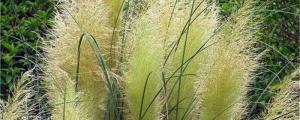**What Does a Nuclear Power Plant Do**
Nuclear power plants harness the energy released by the splitting of atoms to produce electricity. The process involves converting the energy released by nuclear fission of uranium or plutonium atoms into heat or thermal energy which then powers a generator, producing electricity in the process. In this article, we are going to explore the different components and functions of a nuclear power plant.
**The Nuclear Reactor**
The most important part of a nuclear power plant is the nuclear reactor which houses the fuel rods containing enriched uranium. The reactors function by controlling the chain reaction that takes place inside the fuel rods which generates heat, turning water into steam. The steam then powers a turbine that produces electricity. The nuclear reactor is heavily shielded with concrete and steel to minimize the release of radiation to the environment.
**Control Systems**
Nuclear power plants have numerous control systems that ensure the safe operation of the nuclear reactor. One of these control systems is the reactor control system which maintains the reactor power level by regulating the fuel and cooling water flow into the reactor. Another is the cooling system that removes excess heat from the reactor, ensuring that the temperature does not exceed the maximum safe limit. Safety systems such as the emergency core cooling system also prevent accidents in the event of an unexpected failure.
**The Steam Turbine**
Electricity is generated when the steam produced by the heat produced in the nuclear reactor powers a turbine. The steam is channeled through a series of blades on the turbine, causing it to spin rapidly. The spinning of the turbine drives a generator which produces electrical power. Once the steam passes through the turbine, it is cooled down and condensed back to water for re-use in the nuclear reactor.
**The Electrical Grid Connection**
The electrical power produced in a nuclear power plant is transmitted to the power grid which delivers power to homes and offices across the country. The electrical grid connection is a crucial part of a nuclear power plant that ensures the delivery of reliable and safe electrical power to the end-user. The nuclear power plant is designed to work in coordination with the power grid, which measures the electrical power output, and adjusts the power generation up or down depending on the demand.
**The Benefits of Nuclear Power**
Nuclear power is a significant contributor to our electricity generation capacity, accounting for a significant percentage of the world's electricity supply. Nuclear power also benefits the environment by producing very little greenhouse gas emissions, making it an attractive option for companies looking to reduce their carbon footprint. Additionally, nuclear power plants provide a reliable source of electricity that's not affected by external factors such as weather or supply chain disruptions.
**Conclusion**
A nuclear power plant is a complex facility that serves an important role in powering homes and businesses around the world. The nuclear reactor is the most critical component of the facility, producing heat that is used to produce electricity. Control systems ensure the safe operation of the reactor, while the steam turbine produces electrical power. The electrical grid connection ensures the delivery of electrical power to consumers while the benefits of nuclear power include relatively low greenhouse gas emissions, and a reliable source of electrical power.

 how many times do yo...
how many times do yo... how many planted tre...
how many planted tre... how many pine trees ...
how many pine trees ... how many pecan trees...
how many pecan trees... how many plants comp...
how many plants comp... how many plants can ...
how many plants can ... how many plants and ...
how many plants and ... how many pepper plan...
how many pepper plan...































